All about decorative mountain ash
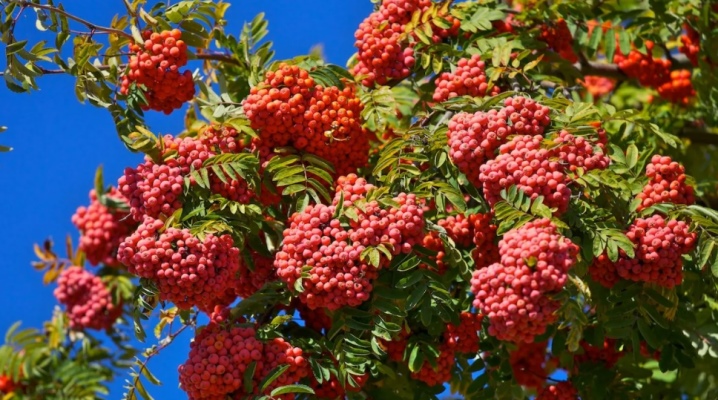
Rowan is a bright and beautiful tree that adorns our gardens and parks. Her image is often used in folk art: songs, fairy tales, embroidery, drawings. It is especially good in autumn, when expressive clusters of fruits are on fire. But today mountain ash can be found not only in red. Breeders have worked on its shape, size and color to please us with a large number of decorative varieties.
Peculiarities
Rowan belongs to the Pink family. The abundance of mountain ash trees (there are about 100 species in nature) allows you to choose the most suitable option for the landscape design of each particular garden. The size of the culture ranges from shrubs growing to a height of just over half a meter to 20-meter tree species such as the Tibetan mountain ash.
The color palette of the plant is also not limited to reds. Among the varieties you can find:
- mountain ash with white fruits: "White Swan", "Kene";
- with yellow berries: "Joseph Rock", "Carpet of Gold";
- with a pink tint: "Sweet Pink", "Moravian large-fruited";
- pomegranate color: "Likernaya Michurina", "Pomegranate", "Titan";
- orange - Matsumura;
- with dark berries, endowed with an almost black tint ("Slate Aron" and other varieties of chokeberry);
- of a beautiful scarlet color: common mountain ash, Matsumura mountain ash.
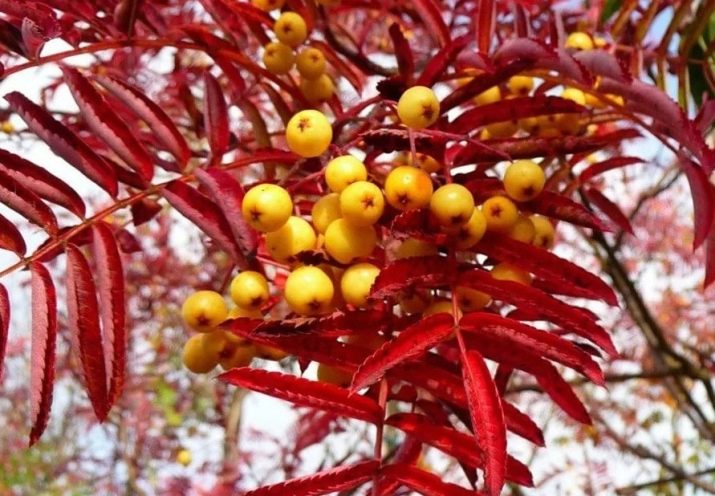
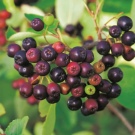
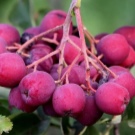
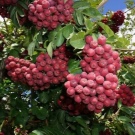

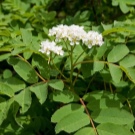
The red color of the tree is essential for reproduction. The birds are happy to eat the scarlet fruits and carry their seeds through the forest. But white and yellow varieties of artificial origin are unattractive to them, such berries remain to winter on tree branches.
Many people believe that mountain ash has a bitter tart taste that disappears only after frost. In fact, there are many sweet varieties without astringency, edible and rich in vitamins. But even the berries of the edible mountain ash, although officially they belong to apples, cannot compete in taste with the fruits of apple trees. But in appearance, the mesmerizing mountain ash tree surpasses many garden beauties.
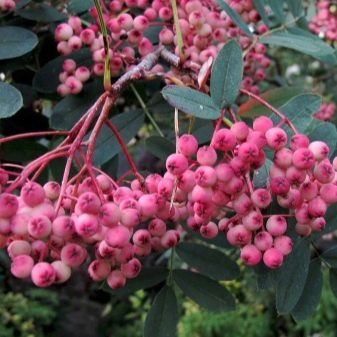
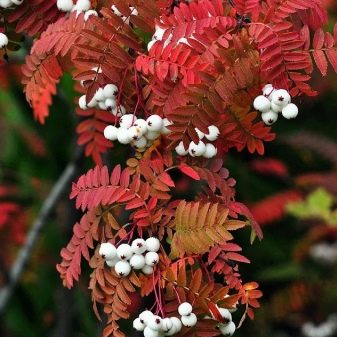
Popular varieties
Rowan is an unusually beautiful tree. Breeders are working with great interest on the creation of new varieties of plants, taking as a basis the numerous species of mountain ash created by nature. Through the efforts of scientists, trees appear with large, sweet berries devoid of astringency; they are used for food.
In our article we will talk about decorative types. Such trees are usually undersized, have abundant flowering. Rowan trees, specially created to decorate gardens and parks, include the following varieties.
- "Ogonyok". Low-growing variety with abundant fruiting. Yellow unripe fruits, gradually pouring, acquire a beautiful scarlet hue.
Suitable for beginners or too busy owners, since the plant is completely unpretentious to care for, tolerates frost and debilitating drought.

- Kene. Unusual rowan fruits resemble small milky apples. They are edible, endowed with a light sour taste without a hint of astringency, but the yield is low. The tree grows to a height of no more than two meters, begins to bloom actively in the fifth year of life, pleasing the eye with white, slightly loose balls. Landscape designers use "Kene" in compositions with scarlet and yellow varieties of mountain ash.
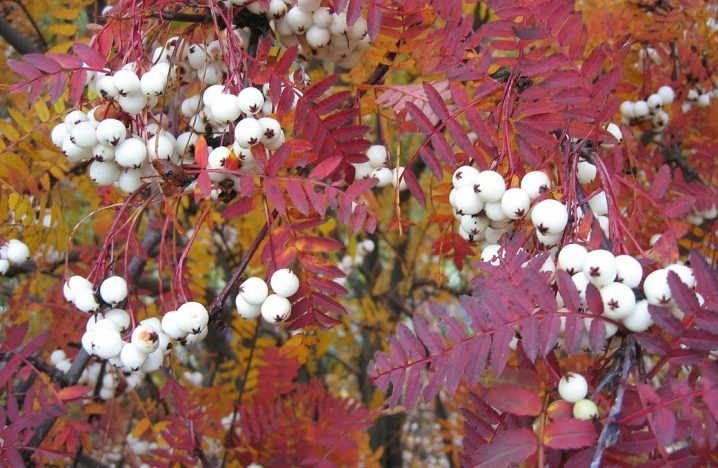
- "Titanium". The variety was bred by crossing mountain ash with some types of pears and apple trees. The result is a beautiful branchy tree with a rich crown.The dark cherry-colored fruit contains a juicy yellow pulp with pleasant pear notes.

- "Likernaya". The berries are distinguished by a beautiful pomegranate shade. Michurin worked on breeding the variety back in 1905, combining the best properties of rowan and chokeberry. The result is a plant that has not only pleasant decorative qualities, but also nutritional value. The tree pleases with a wonderful appearance, perfectly tolerates heat and cold, but does not differ in resistance to diseases and pests.
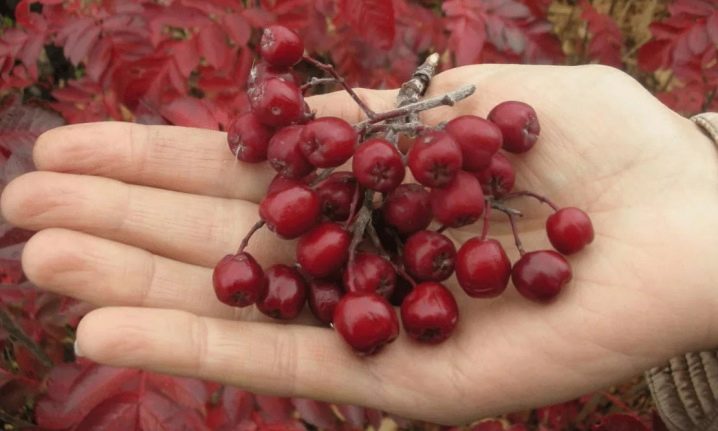
- "Cubic". To breed it, breeders used the ancient Nevezhinsky species. It turned out to be a medium-sized tree with a refined crown. The fruits are deep orange in color, juicy, without astringency, suitable for fresh consumption and for canning.
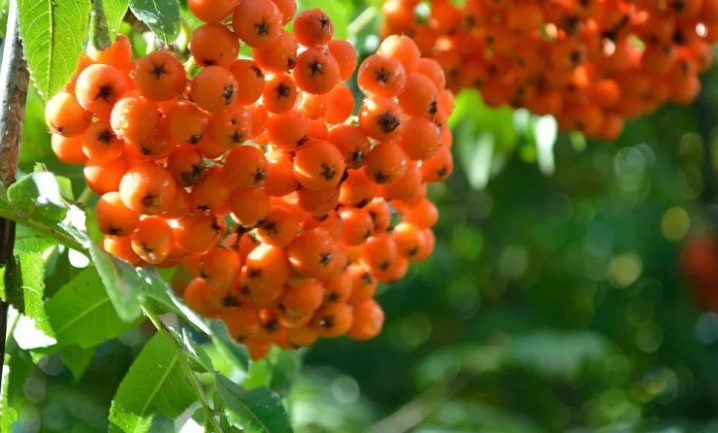
- "Yellow". The tree has an unusual crown: elongated branches cascade down to the ground. In the summer, the foliage has a green palette, and in the fall it turns bright yellow and red. Fruits of a yellow hue are unsuitable for fresh food, but in culinary products they lose their astringency and are used in many dishes.
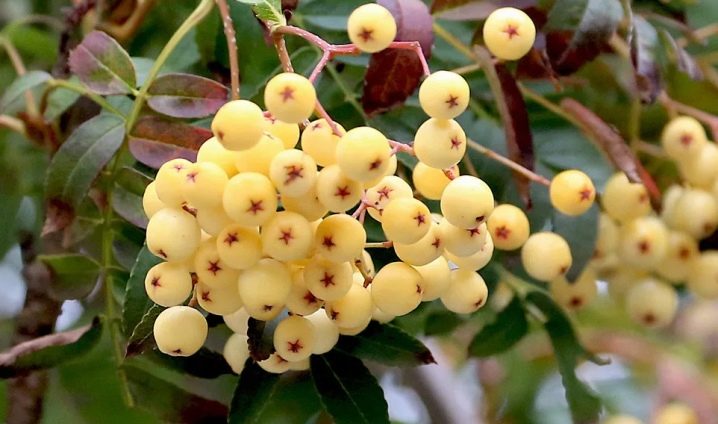
Planting and leaving
Rowan is unpretentious, it will grow in difficult conditions, but if you reckon with its preferences, you can get a beautiful lush tree with an abundance of flowers and fruits. Try to plant the plant in bright areas, adjust the composition of the soil to the most favorable, and carry out timely care.
The soil
Light to medium loamy soils are suitable for mountain ash. If the soil has a different composition, work on it.
- Sand is added to heavy clay soil. It becomes looser, lighter, oxygenated.
- Soils with a large presence of sand, on the contrary, need to get rid of excessive looseness, saturate with a nutrient medium. A good result is given by the introduction into the soil during the digging of compost and manure (in spring and autumn).
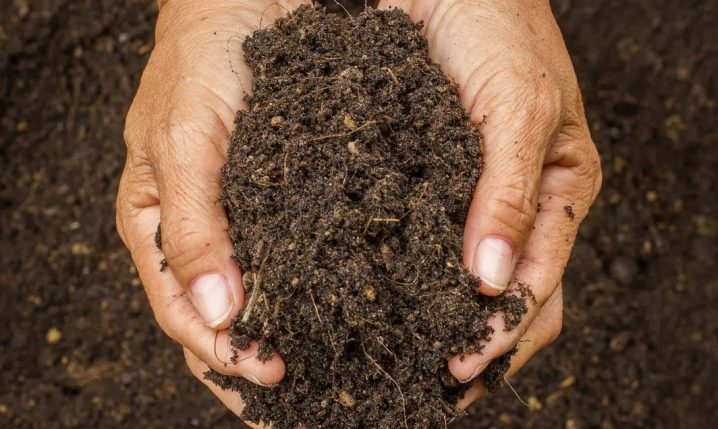
Landing
Trees are transplanted in early spring or late autumn, when the plant is dormant and does not expend energy on growth and development. During this period, the adaptation of the seedling is easy, and the energy is spent on rooting.
For an autumn landing, a landing pit is prepared a few weeks before the event, and for a spring it is better to prepare it in the fall. The tree has a superficial root system, so a deepening of about 60 cm is enough for it. A small drainage is placed on the bottom of the recess, then ripened manure and humus (about 20 kg) are added. Phosphate and potash fertilizers are introduced before planting.
Placing a seedling in a hole, the roots are carefully straightened.
The plant should be sprinkled with earth so that the root collar remains on the surface: a too deep tree painfully and slowly develops. After transplanting, the soil is lightly tamped, then watered abundantly and mulched.
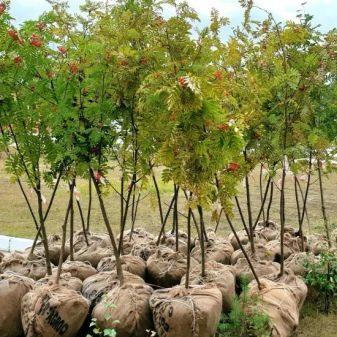
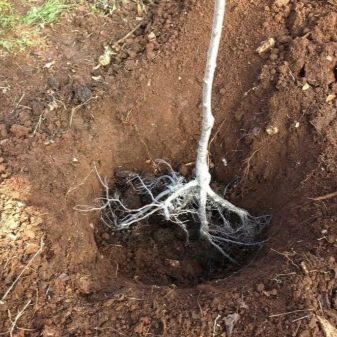
Watering and feeding
Rowan needs moderate, timely watering, drought has a bad effect on its development. But you should not be too zealous either: the roots are close to the surface and can rot from stagnant water. Around the plant, you need to remove weeds and loosen the soil, this will help saturate the roots with oxygen.
In the spring (during digging), compost and nitrogenous fertilizers are introduced into the soil. In the fall, the composition of the dressing should include phosphorus and potassium.
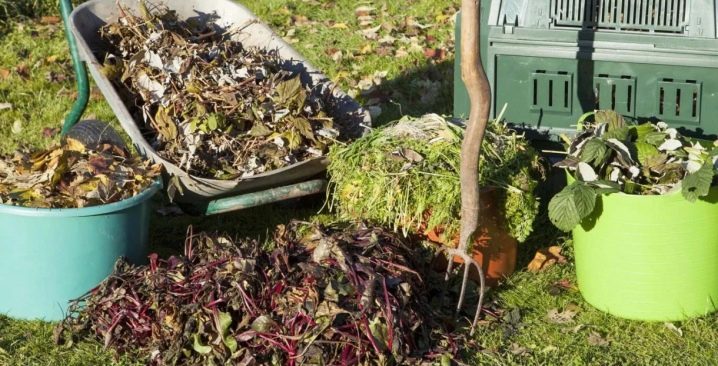
Pruning
The common mountain ash, even with a wild crown, is charming. However, in decorative varieties intended to decorate gardens and parks, not only cut off excess and weak branches, but also form a crown, taking into account the style of the surrounding area.
Every year, young shoots are removed from the stem, which draws out the juices and turns the slender tree into an unorganized bush. Old mountain ash is rejuvenated by strong pruning. All work on the formation of the tree is carried out in early spring before the start of sap flow.

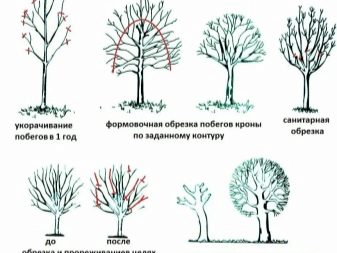
Protection against diseases and pests
Rowan is disease resistant, but poor care can make it look wonderful.Lack of moisture will lead to dropping of inflorescences and underdevelopment of fruits. Watering too much can cause root and fruit rot. Bordeaux mixture will help to fight it.
During drought or temperature jumps, pests attack plants: mites, sawflies, aphids, mountain ash moth, caterpillars. Spraying with chemicals is carried out before fruiting.
Parasites such as tinder fungi can settle on old trunks. Young plants rarely get sick. Since pests move to mountain ash from the surrounding vegetation, they must be treated with pesticides together.
With proper care, an unusually beautiful rowan tree will adorn any garden and will delight from spring to autumn with an amazing color range of its fruits, flowers and leaves.
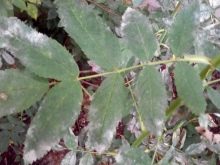

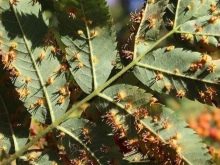



































































The comment was sent successfully.